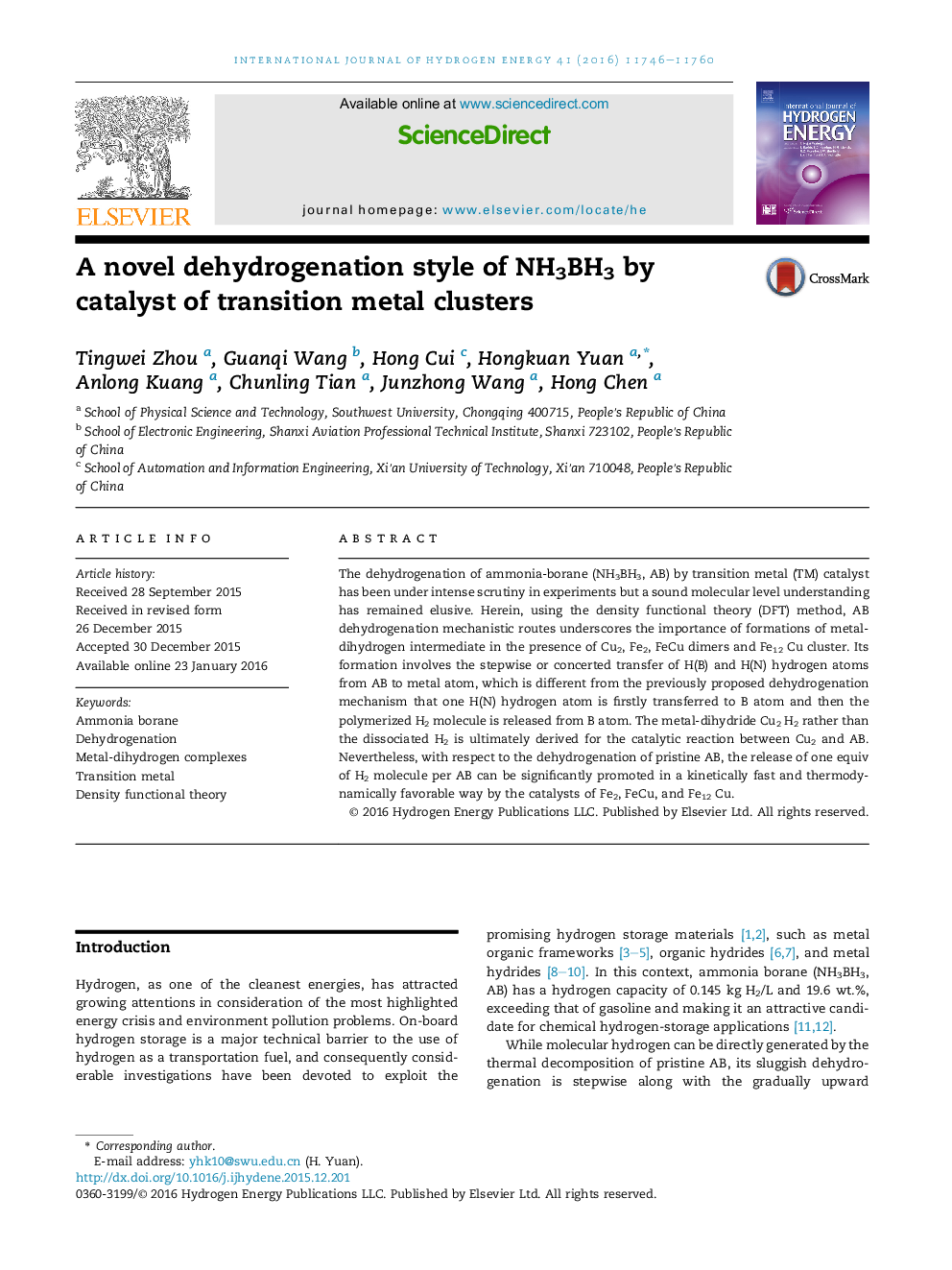| Article ID | Journal | Published Year | Pages | File Type |
|---|---|---|---|---|
| 1268506 | International Journal of Hydrogen Energy | 2016 | 15 Pages |
•The metal-dihydrogen intermediate is the necessary precursor for the release of H2 molecule from BH3NH3 by the catalyst of TM clusters.•TM clusters can reduce the energy barriers for the dehydrogenation of BH3NH3.•The dehydrogenation of AB can be kinetically and thermodynamically improved by the non-noble metal TM catalyst.
The dehydrogenation of ammonia-borane (NH3BH3, AB) by transition metal (TM) catalyst has been under intense scrutiny in experiments but a sound molecular level understanding has remained elusive. Herein, using the density functional theory (DFT) method, AB dehydrogenation mechanistic routes underscores the importance of formations of metal-dihydrogen intermediate in the presence of Cu2, Fe2, FeCu dimers and Fe12 Cu cluster. Its formation involves the stepwise or concerted transfer of H(B) and H(N) hydrogen atoms from AB to metal atom, which is different from the previously proposed dehydrogenation mechanism that one H(N) hydrogen atom is firstly transferred to B atom and then the polymerized H2 molecule is released from B atom. The metal-dihydride Cu2 H2 rather than the dissociated H2 is ultimately derived for the catalytic reaction between Cu2 and AB. Nevertheless, with respect to the dehydrogenation of pristine AB, the release of one equiv of H2 molecule per AB can be significantly promoted in a kinetically fast and thermodynamically favorable way by the catalysts of Fe2, FeCu, and Fe12 Cu.
